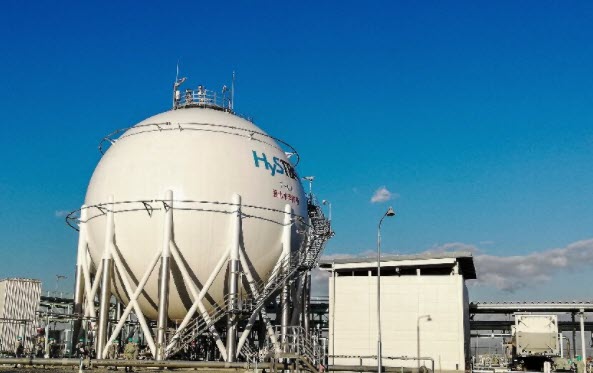Osaka, 23 December (Argus) — Hydrogen is gaining momentum as a clean energy source in Japan after the country pledged to achieve carbon neutrality by 2050. The net-zero target is expected to further drive Japan’s innovation and investment in the hydrogen sector as the government recognises the fuel as a new and promising power source.
Japanese prime minister Yoshihide Suga said on 4 December that his government will create the first ¥2 trillion ($19.2bn) fund to support the innovative development of green technologies — including hydrogen, storage batteries and carbon recycling — over the next decade to help achieve the country’s net-zero target and spur economic recovery from the Covid-19 pandemic.
Suga said hydrogen is recognised as a new power source with “inexhaustible deposits” and encouraged the development of hydrogen-fuelled aircraft and vessels through large-scale production processes to keep costs low. He also emphasised the need to develop low-cost storage batteries to expand the use of electric cars and renewable energy.
Suga’s latest pledge ahead of the closing of an extraordinary parliamentary session backed his earlier announcement of the 2050 emissions target in his first general policy speech to the diet. Japan previously planned to reach carbon neutrality at the earliest possible date in the second half of this century.
The tougher 2050 target highlights the rising role of hydrogen in a future carbon-free economy and has motivated an increasing number of Japanese firms to invest in hydrogen projects across the supply chain, from production to use of the fuel.
Private-sector companies also created the Japan hydrogen association on 7 December to develop a strategic value chain for hydrogen and further strengthen global partnerships in the sector. The association, formed by 88 cross-sectoral Japanese firms, plans to organise discussions on hydrogen-related issues early next year, before it makes policy recommendations to the government in February.
Australia is becoming a close partner in Japan’s hydrogen venture. Both countries have similar ambitions to transit to a low-emissions economy, and Japanese firms are increasing investments in Australian hydrogen fuel projects. Japan’s Mitsubishi Heavy Industries and Iwatani announced investments in Australia’s hydrogen sector last month after Suga made the 2050 pledge.
Strategic focus
The 2050 target is expected to prompt Japan’s trade and industry ministry (Meti) to review and strengthen its hydrogen strategy, including the Basic Hydrogen Strategy, which was announced in 2017 and updated in March and September 2019. The review, which may accelerate current efforts and add initiatives, will follow ongoing discussions on the country’s energy policy reform, which is targeted to be completed next year and should reflect the latest carbon target.
Japan’s current hydrogen strategy aims to expand supply of the fuel to 300,000 t/yr in 2030 and to more than 10mn t/yr in the future, up from just 200t in 2017. The 10mn t/yr is estimated to be able to fuel power generation units with a combined capacity of 30GW, equivalent to 30 nuclear reactors of a 1,000MW class.
Meti has requested a budget of ¥84.8bn for the April 2021-March 2022 fiscal year to promote the hydrogen industry, up by 21pc from an initial budget of ¥70bn for 2020-21.
But Japan is facing challenges to reduce the cost of hydrogen fuel so it can compete with other conventional fuels, such as LNG as a generation feedstock and gasoline as a motor fuel. Meti aims to cut hydrogen prices at filling stations to ¥30/Nm³ or ¥17/kWh in 2030, down from ¥100/Nm³ in 2017. But the 2030 target price is still higher than average LNG generation costs of ¥12/kWh as of December 2017. The government is hoping to reduce hydrogen fuel costs further to ¥12/kWh, which is expected to be realised in the case of a 10mn t/yr demand scale.

